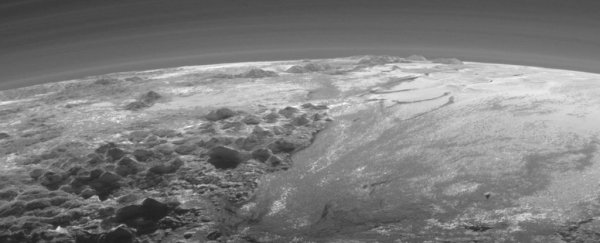The International Astronomical Union (IAU) has a very strict definition of the word "planet".
According to the definition – drafted, tweaked, and agreed upon in August 2006 – an astronomical body is officially a planet if it orbits the Sun, has sufficient mass to be spherical, and has cleared the neighborhood around its orbit.
Under these strictures, only eight bodies in the Solar System can be considered planets: Mercury, Venus, Earth, Mars, Jupiter, Saturn, Uranus and Neptune.
This definition very effectively cut out Pluto, a move that has proven, at the very least, extremely controversial, with many scientists calling for a more inclusive redefinition based solely on the physical properties of the body in question.
Which brings us to a new paper that has bolstered those bids with an in-depth analysis of the IAU criteria. Those criteria, the paper finds, are not based on science after all; instead, they rely on folklore and astrology.
Led by planetary scientist Phillip Metzger of the University of Central Florida, the researchers urge that the third criterion in particular be rescinded, and the definition of a planet be simplified: that the body is, or has been, geologically active.
This would put many Solar System bodies in the planet category, including Earth's Moon and many other moons, dwarf planets, and even asteroids – an outcome that has previously been used as an argument against expanding the definition.
But the fact that these bodies are similar enough that they could be grouped together is a compelling reason why they should be, the researchers behind the new study say.
"It's like defining 'mammals,'" Metzger says. "They are mammals whether they live on the land or in the sea. It's not about their location. It's about the intrinsic characteristics that make them what they are."
Over a period of five years, the team conducted an in-depth review of the last 400 years of scientific literature on planets. They found that, gradually over time, the definition set by Galileo in the 1630s has been chipped away.
Planets, Galileo argued, are objects made of elements that change over time, much as Earth does. Or, as the researchers interpret it, they are geologically active. They also cite Galileo's argument that planets reflect sunlight, rather than producing light of their own.
This definition was in use until the 20th century, the researchers point out. When Pluto was discovered in 1930, it was categorized as a planet. But between 1910 and the 1950s, the researchers found that there was a declining interest in planetary science, at least as far as the literature goes – the number of papers published in this time dwindled.
"We've shown through bibliometrics that there was a period of neglect when astronomers were not paying as much attention to planets," Metzger says. "And it was during that period of neglect that the transmission of the pragmatic taxonomy that had come down from Galileo got interrupted."
That vacuum, the paper asserts, was filled by folklore. In the previous two centuries, almanacs had become popular – annual books that made meteorological and other predictions based on the positions of a small number of planets. Astrology, in other words.
This introduced and cultivated the perception that only the largest bodies orbiting the Sun were planets. Anything else, such as moons and asteroids, were not.
And this, they suggest, crept into the scientific literature.
"This might seem like a small change, but it undermined the central idea about planets that had been passed down from Galileo," Metzger says.
"Planets were no longer defined by virtue of being complex, with active geology and the potential for life and civilization. Instead, they were defined by virtue of being simple, following certain idealized paths around the Sun."
The geophysical definition started to rise again in the 1960s, when scientific interest in Solar System exploration was renewed, causing a split in scientific thought. The IAU definition in 2006 sought an end to the argument, but that obviously hasn't happened.
One could argue that our understanding of the different kinds of rocks in the Solar System is a lot more sophisticated than it was in Galileo's day. But the criterion of "clearing the orbital neighborhood" is not where that argument should lead, the researchers say. Instead, this criterion was developed to keep the number of planets small and manageable, and that's bad science.
"When Galileo proposed that planets revolve around the Sun, and reconceptualized Earth as a planet, it got him jailed under house arrest for the rest of his life," Metzger says.
"When scientists adopted his position, he was vindicated, in a sense, let out of jail. But then around the early 1900s, we put him back in jail again when we went with this folk concept of an orderly number of planets. So, in a sense, we rejailed Galileo.
"So, what we're trying to do, in a sense, is get Galileo out of jail again, so that his deep insight will be crystal clear."
The authors, all experts in fields of space research, might have their interpretation of science history challenged by others in the research community, however, who are likely to have their own alternative takes on how voices, fashions, and beliefs in the past inform the way we now categorize nature.
But as the study authors put it, definitions matter. They shape how we observe, theorize, and think about nature on a fundamental level.
It's a paper that will no doubt ruffle a few feathers, and keep the debate over planets going for a while to come yet.
The paper has been published in Icarus, and supplementary data published online in full on Metzger's website.
